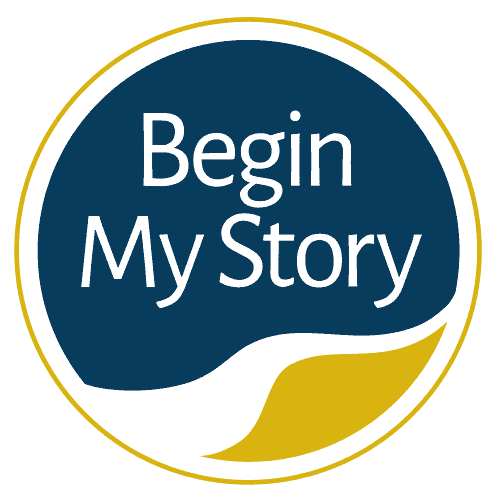
15 strategies to find ancestor names in historical records.
When I began searching individuals in the U.S. Federal research, I would only search indexes of books, online databases, and related records for my surname Schreiber precisely as it was spelled with no other variation. Since then, I have found my name spelled in over 25 different ways. Resources that I had discounted as not having any record of my family, I have gone back and found information there but just under a different spelling. Searching for an individual’s name in the census, indexes and records is a skill. I want to share a few tips to create a search strategy for finding individuals’ names.
Table of Contents
ToggleTable of Contents
The following are the 15 strategies to find ancestor names in historical documents that are discussed in this article.
- Create a surname variation list
- Focus on initials or abbreviations
- Focus on the middle name
- Focus on the phonetic sound of the first vowels
- Check double letters
- Letters can become transposed
- Search all surnames that begin with the same letter
- Letters can be misread
- Phonetic substitutes
- Consider how the name is pronounced in the mother tongue
- Search the Americanized version of the name
- Search the original record
- Search male and female nicknames
- Look for individuals in an index
- Use the Soundex
Is there a chance the census taker missed the individual or family your researching in the U.S. Federal Census? Possibly, but not likely. There could be several reasons why you are not finding them in the census. For example, the person
- May not have given the correct answers to questions because they didn’t know the answer
- Wasn’t home, and the census taker asked a neighbor for the information
- Person answering intentionally gave the wrong answer
I want to share 15 strategies to find names in the U.S. Federal Census and other document resources.
1. Create a surname variation list
If you can’t find the record, check if the name is spelled a different way. It is wise to practice when it comes to old documents; spelling doesn’t count, especially with names. Instead of narrowing the field of research with exact spelling, it is essential to enlarge it with every possible spelling.
I knew one researcher whose last name was “Brown.” When she was presented with information that could help her find five generations, she declined to accept the research because the name was spelled with the German spelling of “Brun.”
Return to Strategies to Find Ancestor Names Table of Contents
2. Focus on Initials or abbreviations
Look for the surname with the first or middle names as initials or abbreviations. If I were searching for an individual with the name of “James William Schreiber,” I would search indexes and records for variations as follows:
- Schreiber, J.
- Schreiber, J. W.
- Schreiber, Jas. W.
- Schreiber, Jas. Wm.
- Schreiber, James W.
- Schreiber, J. William
- Schreiber, J. Wm.
- Schreiber, James
- Schreiber, William
3. Focus on the middle name
If I were searching for the individual named “James William Schreiber,” rather than searching the first as “James,” I would focus on Willam’s middle name as if it was the first name.
4. Focus on the phonetic sound of the first vowels
There are some names that, when they are pronounced out loud, the first vowel can be mistaken for other vowel sounds and thus easily misspelled. For example, if I said the name “Gillepsie” out loud, I could easily find the name spelled as follows:
- Gallespie with the I being replaced with A
- Gellespie with the I being replaced with E
- Gollespie, with the I being replaced with O
- Gullespie, with the I being replaced with U
5. Check double letters
Search the index for the name with double letters added or deleted. There are surnames such as those of Scandinavian descent where double letters were shared, and the two letters were reduced to one through time. That said, you need to look for the name both ways. For example:
- Search both Fuller and Fuler
- Search both Bakker and Baker
- Search for Paasken and Pasken
6. Letters can become transposed
Transposed refers to when two letters change places. For example, in my surname of Schreiber, transposed would be where SC is written CS. When you are researching transcripts of original records, transposed letters are common. Make a practice to look for transposed letters of the first four letters of the surname you are researching. For example, if I were researching the surname” Kimball,” I would
- Search Ikmball focusing on the IK transposed letters
- Search Kmiball focusing on the MI transposed letters
- Search Kibmall focusing on the BM transposed letters
- Search Kimabll focusing on the AB transposed letters
7. Search all surnames that begin with the same letter
Make it a practice to search all the names in the index that begin with the same letter. For example, if you can’t find the surname Schreiber, I would scan all the names that begin with “S” for garbled or misplaced spellings of Schreiber.
8. Letters can be misread
Reading and deciphering handwriting is a skill. Some letters are more commonly misread than others when transcribed. You can use this knowledge to substitute letters in name spelling, perhaps to look for spelling variations. For example, commonly misread letters are as follows:
- “A” is commonly misread as H, C, or O
- “a” commonly misread as o, u, ei, ie, n, w
- “B” is commonly misread as R, P, S
- “b” is commonly misread as li, le, t, h, i
- “C” is commonly misread as G, E, O, Ce
- “c” is commonly misread as e, l, o, u
- “D” is commonly misread as G, S, I, J, T, Lr
- “d” is commonly misread as u, a, n, ie, ei, ee, ct, o
If I were looking for searching the last name of Carter, I would search for
- Garter changing the C to G
- Eater changing the C to E
- Oarter changing the C to O
- Cieater changing the Ca to Cie
- Corter changing the Ca to Co
9. Phonetic substitutes
We have already touched on the topic of phonetic sounds of the first vowel. When names are said aloud, some letters and letter combinations are commonly written differently but sound similar. These is referred to as phonetic substitutes. For example
- “a” when said out loud can be written as e, l, o, u, y, ey, eh
- “au” when said out loud can be written as ow, ou
- “b” when said out loud can be written as p, v, bb, pp
- “bb” when said out loud can be written as b, p, pp
- “c” when said out loud as in the word (catch), can be written as k, g, gh, g, cc, ck
- “c” when said out loud as in work (chin) can be written as ch, cz, s, sh, tch, tsh, z, dg
If I were to say the last name of “Radcliffe” out loud, I would be focusing on the variations of the name phonetically. “Radcliffe” could be written
- Rhadcliffe changing the Ra to Rha
- Ratcliffe changing the Rad to Rat
- Raddcliffe changing the Rad to Radd
- Radkcliffe changing the Radc to Radk
- Radgliffe changing the Radc to Radg
- Radclive changing the liff to liv
- Radcliphe changing the liff to liph
10. Consider how the name is pronounced in the mother tongue
When I searched my German lines, I have carefully considered how a person whose mother tongue was German would say the name in English and how the census taker might write down what he heard. For example:
- Dorothea becomes Dor-o-taya
- Georg becomes Gay-org
- Michael becomes Meech-ah-el
- Thomas becomes Tow-mas
- Wilhelm becomes Vil-helm
11. Search the Americanized version of the name
I have also run into the situation where the German family took the liberty to change their first, last or both first and last name to the American version. For example, the Americanized German first name of
- Franz became Frank
- Gabi become Gabriele
- Karl became Carl or Charles
- Lars became Larry
- Renate became Renee
- Rolf became Rudolph
- Johannes became John
For example, the Americanized German last name of
- Alder becomes Eagle
- Berg becomes Mountain
- Grun becomes Green
- Barth becomes Beard
- Schreiber becomes Scribe or Writer
- Zimmerman becomes Carpenter
- Zweig becomes Twig or Branch
12. Search the original record
If the record you are viewing is a transcript, the transcriber may have misread the original record. Your focus should be to search for an original version of the record to compare any differences. Where possible, I try to make it practice to view the original. I have found an average of 15% of the time when mistakes in transcription have been made. How do you find the original?
- Check to see if you can see a digital version online (Note: most online databases give you the option to see the digital version of the record)
- Check to see if the FamilySearch library catalog has the record on microfilm or on online record that you order and view locally at a family history Center
- Write where the original record may be located, such as courthouse/state archive and ask for a copy.
Once you see the original, compare the copy with the original record, watching for the suggestions made in the tables above.
13. Search male and female nicknames
Perhaps the person you were looking for went by a nickname. For example, a nickname for the German first name of
- Albert becomes Al, Bert, Bertie
- Agnes becomes Aggie
- Alfred becomes Al, Fred, Freddie
- Elisabeth becomes Elsbeth, Else, Elsie, Lise, Lisbeth, Lizbeth, Liz, Lizzy, Lizzie, Belle, Bette, Betty
- Florance becomes Flo, Floss, Flossie
- Maria becomes Marie, Ria
- Marjorie becomes Marge, Margie, Patty
- Otto becomes Ott, Ottie
- Peter becomes Pete, Petie
- Sarah becomes Sara, Sadie, Sally
- Wilhelm becomes Will, Willy, Bill, Billy, Helm
The concept is the same for American names. For example:
- Abigale becomes Abby
- Christina becomes Chris, Tina
- Frances becomes Fannie, Fanny
- James becomes Jim, Jimmy
- Margaret become Madge, Maggie, Midge
- Mary becomes Polly, Pollie
- Richard becomes Dick
- Robert becomes Rob, Robbie, Robin
See the following articles:
- Search 494 Male Birth Names and Associated Nicknames
- Search 582 Male Nicknames and Associated Birth name
- Search 606 Female Birth Names and Associated Nicknames
- Search 702 Female Nicknames and Associated Birth Name
14. Look for individuals in an index
If you are not finding an individual in the index, look for the names of parents, children, brothers or sisters, and uncles or aunts. If you find relatives in the index, it’s a good clue that you need to search the original record to see if the person you want is mentioned in the record but was missed by the indexer.
15. Use the Soundex
In cases where you are searching for the hard-to-find individual, try the “Soundex” spelling option instead of the exact match option. Searching phonetically is helpful because it helps compensate for census taker spelling errors or names that were “Americanized” from their foreign spellings.






